#Enheduana
Explore tagged Tumblr posts
Text
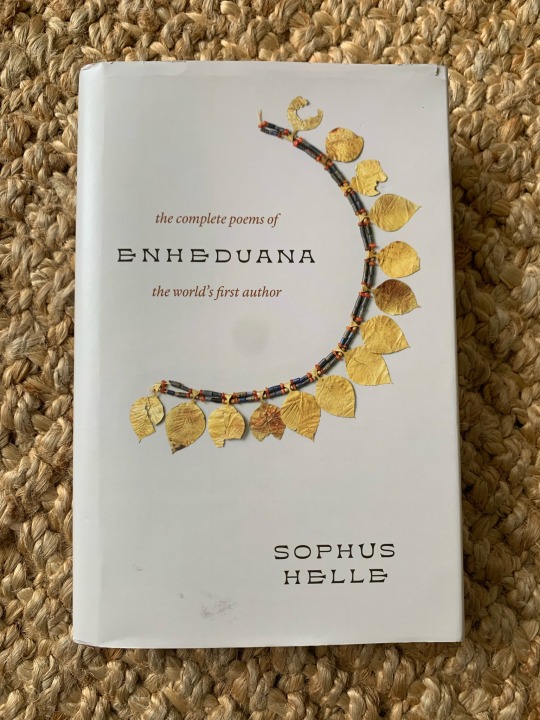
While at Elliot Bay Books, my ears perked up at a casual mention of poetry by “some woman from ancient Sumer or Ur.”
Was it Enheduana???? Yes!
I’m still bummed I missed the exhibit on Enheduana at the Morgan Library.
So, even though I had *just* said that I wasn’t ever going to haul paper books around in my suitcase again, I bought this translation by Sophus Helle.
I’m so glad I did. It’s a great book. Great subject, great writing. I can’t comment on the accuracy of the translation, but the poetry is knockout and the essays are accessible and fascinating.
235 notes
·
View notes
Text
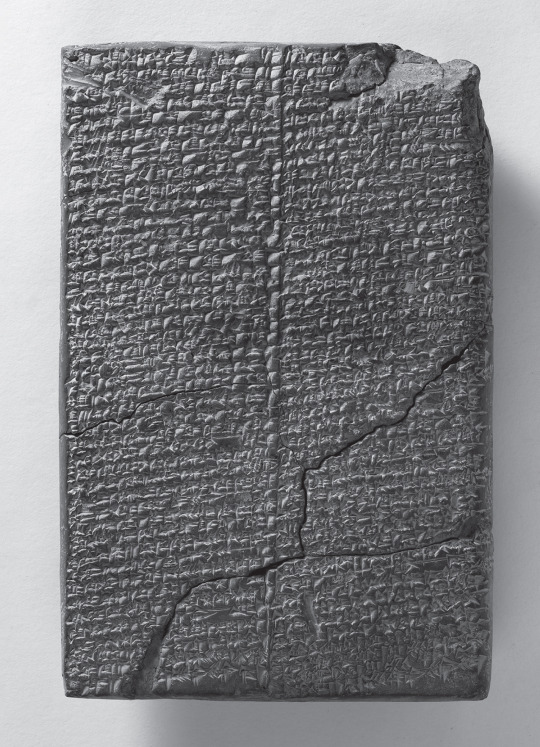
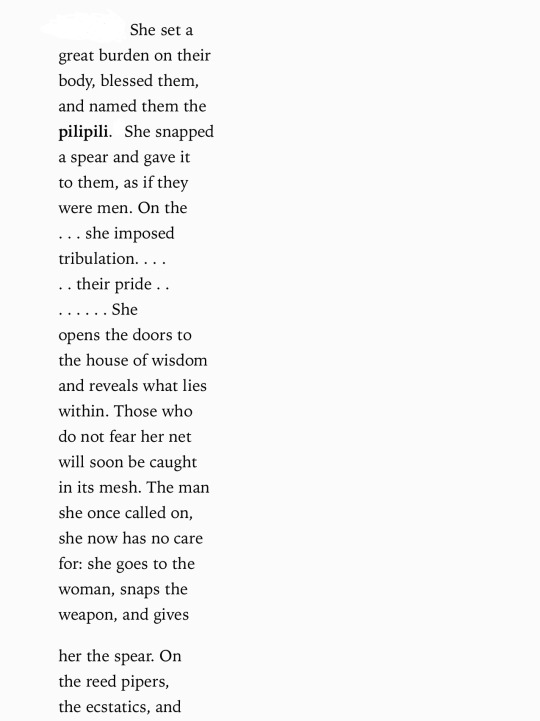

—Enheduana, from “The Hymn to Inana”
Gender-bending in the world’s most ancient authored text, newly translated by Sophus Helle.
From an essay by the translator: “The evidence for activities that sought to actively subvert established gender norms is much clearer when we turn to another and much more motley class of ritual performers. These included the kurĝara, the saĝ-ursaĝ, and the pilipili, as well as several other groups who were associated with the worship of Inana and who performed rituals in which they upended the usual conventions of gender. Ancient texts describe processions in honor of Inana in which the participants would wear female clothes on one side of their body and male clothes on the other. They would brandish weapons, which were the traditional signs of masculinity, as well as weaving instruments, such as spindles and distaffs, the traditional signs of femininity. By mixing and juxtaposing the standard symbols of gender, they would introduce an element of confusion and capriciousness into the conventions of gendered behavior: if the same person could wear both female and male clothes, viewers were led to ponder the nature of gender itself. It is highly likely that the various groups, such as the kurĝara and the saĝ-ursaĝ, would subvert gender norms in different ways: some were perhaps individuals who generally appeared to be female but performed stereotypically male actions, others the reverse, but because of the limitations of our sources, it is difficult to reconstruct the differences between them. Either way, these groups were all engaged in a playful scrambling of what was thought to be typically male and typically female.”
On the pilipili: “Inana then blessed them, named them, and gave them a snapped spear ‘as if they were a man’ (ll. 80–81). The passage implies that they were generally seen as women and that they announced their distance from normative gender by carrying a broken emblem of maleness. However, the text identifies them not with one gender or the other but with the transition between genders, referring to them as ‘the changed pilipili’ (l. 88). Together with the reed pipers, the kurĝara, the saĝ-ursaĝ, and the ecstatics, they are depicted as ritual lamenters: Inana ‘makes them weep and wail for her,’ so that they ‘exhaust themselves with tears and tears’ (ll. 87, 90).”

#literature#poetry#Inana#inanna#Enheduana#assyriology#Sophus helle#enheduanna#genderqueer#nonbinary#gender nonconforming#Sumerian literature
242 notes
·
View notes
Text
Enheduana Was A Strategic Priestess
She wasn’t just a priestess who became famous for her beautiful literature. She wasn't a woman of low birth who dedicated herself to Inana solely out of love. Or any other romanticized story. She was, in the beginning, a strategic royal tool of conquest.
I'm writing this because I came across "Inanna: Lady of Largest Heart" by Betty DeSheong Meador. She is a Jungian analyst, she says she studied under an Assyriologist (I have a bone to pick with Jungian analysts but whatever) I noticed this on page 7:
...she was now elevated to the supreme position in the Sumerian pantheon. There is no way to know why Enheduanna made the painstaking effort to elevate Inanna above all the great gods. Perhaps it was simply an act of dedication to her goddess.
There is evidence. It wasn’t just an act of dedication.
🔹Why Inanna Was Elevated🔹
Ištar was the tutelary Goddess of Sargon of Akkad [1] [2]
From a legend of him:
Akki, the irrigator, as his gardener appointed me. When I was a gardener the goddess Ishtar loved me [3]
Sargon conquered many Sumerian cities. He instilled his daughter Enheduana as priestess of Nanna and Inana at Ur— one of the most powerful Sumerian cities [4].
Why? To use religion to legitimize his reign [5]. Sargon respected Sumerian culture [6] so it makes sense to try and legitimize his reign via appeasing the Sumerians themselves— using religion was an extremely common tactic for conquerors [5]. The Gods were the ones who appointed Kings and punished them when they did wrong.
Nanna was the tutelary God of Ur [7]. Making her a priestess of the most important God put her in a position of power to elevate Inana and equate her with Ištar [8] a good political move.
This is where the false idea that "Inana is a moon Goddess" comes from; people seem to cut out the Moon God Nanna when telling her story. Enheduana was priestess of both of them— and held the role of Ningal, Nanna's wife, in some ritual settings.
After being exiled from Ur and receiving no help from Nanna, she turns towards his daughter, Inana, to seek help. And raises her even further above the Gods in the hopes of gaining her favor and assistance; it was a personal cry for help by Enheduana while she is in exile. [11]
I’m not trying to say she did not love Inana and it was just a royal duty or some sort of bribe, I am stating her actual origin and reason for being a priestess.
She is described in the Disc of Enheduanna
Enheduana, priestess of Nanna, spouse of Nanna, daughter of Sargon, the king of the world, built an altar in the temple of Inana-Zaza at Ur and named it Altar, the Table of Heaven” [9.1]
[Right: Original Disc [9.1] | Left: restored version at Penn Museum [10] ]

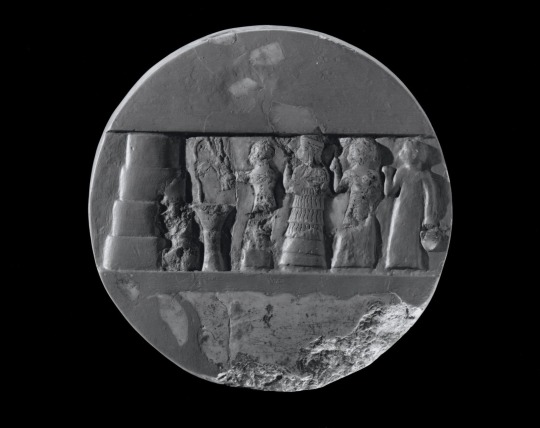
🔹Inana's Importance🔹
No doubt Sumerian Inana and Akkadian Ištar was one of the most important Goddess throughout Mesopotamia and eventually neighboring regions. Many local Goddess were identified with her at various dates (even if originally separate).
But was Inana actually placed above all other Gods?
Yes, in two literary compositions (as of right now). The Exhaltion of Inana & Inana C. Two literary compositions do not equated to the 3000+ year history of Mesopotamian religion and I wish more people who wrote on this topic acknowledged that.
To be the "Queen of all the me" was to hold the cosmos in one's palm. Crucially, this was not a universally accepted view of Inana. Though she was of course a celebrated goddess in Sumerian culture, she was generally considered inferior to the main male deities of the pantheon: Enlil, An, and Ea. The Exaltation sets out to change this by making Inana supreme among gods, and this aim is emphatically announced in the first three words of the text. [11 page XIX]
It is often stressed that the plethora of myths & hymns from cultures with more literature available (and popularity) such as Greece & Rome do not always reflect the totality of their ancient beliefs—it is the exact same situation when it comes to Inana.
🔹Better Source for Enheduana🔹
If you want to read these same hymns in a way that is presented for a modern audience I suggest the version done by the Assyriologist Sophus Helle, who has a passion for Edheduana, in his book "Enheduana: The Complete Poems of the World's First Author"
Google Books — LINK
Companion website to the book - LINK
Enheduana on his personal website — LINK
Helle actually has Maedor's work listed in the bibliography of the companion website (albeit I read the entire website and can't find where it is used) [9.2], but translations coming from an actual Assyriologist are a better option for those who want to know Inana.
On each of the companion pages—The Exaltation, The Hymn, and The Temple Hymns—he mentions other translations of the literary compositions that are also reliable but he never suggests Meador's translations. Additionally, his book is 2023, hers is 2000, so his will have much more updated information about Enheduana & Inana, and he mentions that more updated info will naturally continue to come forward.
You can also explore them in a very literal translation on the ETCSL.
ETCSL Inana Hymns— LINK
Exaltation of Inana / Inana B — LINK
The Hymn / Inana C — LINK
🔹Sources🔹
[1] The Two Steles of Sargon: Iconology and Visual Propaganda at the Beginning of Royal Akkadian Relief by Lorenzo Nigro in Iraq Vol. 60 https://www.jstor.org/stable/4200454?seq=1
[2] A Tribute to King Sargon of Akkad by Agulyas from Mott Community College Historical Faculty https://history.mcc.edu/wordpress/history/2014/04/04/a-tribute-to-king-sargon-of-akkad/
[3] Ancient History Source Book: The Legend of Sargon of Akkadê, c. 2300 BCE from Fordham University https://sourcebooks.fordham.edu/ancient/2300sargon1.asp
[4] 095. Tell Maqayyar (ancient: Ur) from Colorado State University https://www.cemml.colostate.edu/cultural/09476/iraq05-095.html
[5] Sargon of Akkad: rebel and usurper in Kish by Marlies Heinz http://faculty.uml.edu/ethan_spanier/Teaching/documents/CP2.0HeinzSargonofAkkad.pdf
[6] Handbook to Life in Ancient Mesopotamia by Stephen Bertman.
[7] Nanna/Suen by Adam Stone at Oracc and UK Higer Education Academy http://oracc.museum.upenn.edu/amgg/listofdeities/nannasuen/
[8] A Dictionary of Ancient Near Eastern Mythology by Gwendolyn Leick
[9] Enheduana . org "Authorship" https://enheduana.org/authorship/
[9.1] "Disc of Enheduana" https://enheduana.org/disk-of-enheduana/
[9.2] "Bibliography" https://enheduana.org/bibliography/
[10] Penn Museum https://www.penn.museum/collections/object_images.php?irn=293415
[11] Enheduana: The Complete Poems of the World's First Author by Sophus Helle
I have a working draft on the Inana's importance section, that I removed from this post because it was getting too long and off topic. Will I finish it? Literally have no idea.
Originally written February 9th, 2020, complete overhaul in 2024 due to access to Helle's commentary and resources. And wanting to be more concise. So I don't think this counts as a repost 😬.
#polytheism#paganism#landof2rivers#levpag#queue#michibooks#enheduana#enheduanna#sumerian#inana#inanna#lady of the largest heart
16 notes
·
View notes
Text
I carried the basket of offerings, I sang the hymns of joy. Now they bring me funeral gifts -- am I no longer living? I went to the light, but the light burned me; I went to the shadow, but it was shrouded in storms. My honey-mouth is full of froth, my soothing words are turned to dust.
-Excerpt from "The Exaltation of Inana" in The Complete Poems of Enheduana The World's First Author and translated by Sophus Helle
8 notes
·
View notes
Text
The complex pantheon of Sumer sorts itself immediately into two easily recognizable categories: male gods and female gods. Goddess worship was not a separate religion, and goddesses as well as gods were an integral part of Sumerian religion and thought. The stories about goddesses do not come from any separatist women's cult and are neither female fantasies nor women's mythmaking. They are mainstream literature, the high culture of ancient Sumer. The authors of most of these compositions, male or female, are anonymous; but the earliest great poems of Sumer were written by a woman, Enheduanna, who was both En priestess of the god Nanna in the city of Ur and daughter of King Sargon of Akkad. She was the Shakespeare of ancient Sumerian literature in that her beautiful compositions were studied, copied, and recited for more than half a millennium after her death. These poems were not shared only with the women of ancient Sumer. On the contrary, we know these poems, as we know most of the literature of ancient Sumer, from copies that were made by students in the ancient Sumerian schools. Most, if not all, of these students were male. The poems of Enheduanna, and the other myths and hymns about goddesses whose authors (male or female) are unknown, were part of the curriculum of these schools, studied and taught by males. Men as well as women discussed and worshiped the goddesses of ancient Sumer.
This two-gendered pantheon mirrors the duality of nature, in which humans and other animals, and even some plants, occur as masculine and feminine. In some cases, the sex of a god makes no real difference to its function. In their control of cities, goddesses and gods play equivalent roles. The god of the city could be either male or female. In most cases, this deity also had a spouse who was less important to the wellbeing of the city than the deity itself. It was not always the male partner who was the major god. Either configuration was possible: the goddess could be the major deity, with her male spouse less significant than she; the male god could be chief deity, with a wife secondary to him.
However, in most conceptual realms, the sex division in the Sumerian divine world is not incidental. The sex of a god was crucial to that god's role and function in the thought system. Gods and goddesses are not interchangeable: the god Enlil could not be the goddess Ninlil, his spouse. The goddess Inanna could not be the god Utu, her brother. The femaleness of a goddess is essential.
-Tikva Frymer-Kensky, In the Wake of the Goddesses: Women, Culture, and the Biblical Transformation of Pagan Myth
13 notes
·
View notes
Text
"Your lady is the mother, the holy woman wreathed in agate,
Who cares for the Steadfast Chapel of this sacred place.
She holds the great gems of her holy women,
She has set aright the breasts of the seven priestesses.
The seven ecstasies resound for her."
-Enheduana, translated by Sophus Helle. Something like 2300 BCE.
Dunno what that means exactly but it sounds pretty sexy.
4 notes
·
View notes
Text
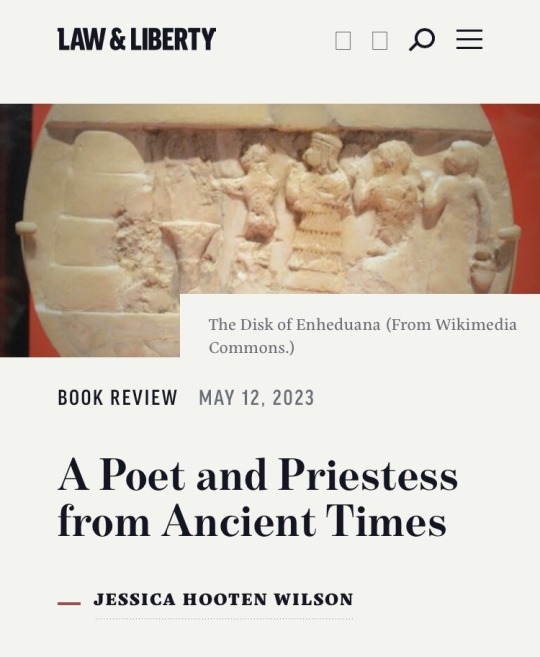
Enheduana is the first poet in history whose name we know.
21 notes
·
View notes
Text
Giornata Mondiale della Poesia
Enheduana Buongiorno cari amici, poeti e signora Poesia.La poesia è sacraLa poesia è come una preghiera,si impara a memoria e ritorna nella mentecome la musicalità di un ritornello,rimane affacciata agli pareti dell’anima.La poesia è sacra. I poeti sono umani, pochi diventano miti.Oggi non è un giorno di inizio della settimana, non è solo il primo giorno dopo il Solstizio della Primavera. Oggi è…
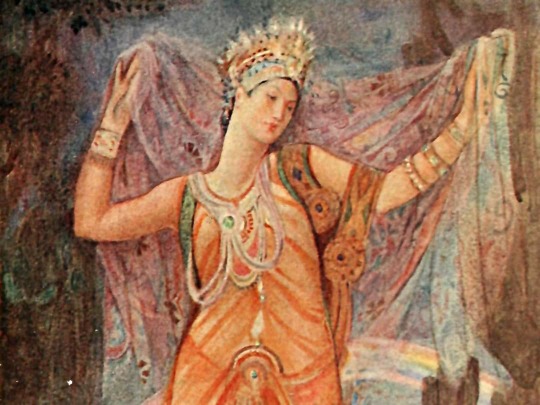
View On WordPress
1 note
·
View note
Text
do you ever think about how the first ever author mentioned in history is Enheduana, a female poet (and the high priestess of Innana/aka Ishtar)?
do you ever think about how the first ever goddess mentioned in history is Ishtar, the mesopotamian goddess of love?
#god forbid they mention women in literature lol#literature#ancient literature#literature history#sumerian literature#history#sumerian history#ancient sumeria#enheduana#ishtar#innana#feminism#feminist literature
11 notes
·
View notes
Text
Reading the Complete Poems of the Sumerian priestess Enheduana, the world's first named author, as edited and translated by the Sumerologist Sophus Helle. Call me corny if you like, but I get a genuine chill thinking that this woman is speaking to me (and to every reader) across the gulf of four millennia.
143 notes
·
View notes
Text
open access version of the enuma elish: a translation by assyriologist sophus helle (who did a popular gilgamesh translation in 2022, as well as a complete collection of poems by enheduana in 2023) and essays by others
26 notes
·
View notes
Quote
Let them know that you grind skulls to dust. Let them know that you eat corpses like a lion.
Enheduanna, Enheduana: The Complete Poems of the World’s First Author, to Inanna
413 notes
·
View notes
Text
Enheduanna
Enheduanna, the Akkadian poet, stands as a towering figure in ancient Mesopotamian literature, revered as the world's first known author and poet. Born around 2285 BCE, Enheduanna was the daughter of Sargon of Akkad, the legendary ruler often credited as the founder of the world's first empire. Her precise familial ties remain debated among scholars, but what's clear is that Sargon appointed her as the high priestess of the most important temple in Sumer, located in the city of Ur. Enheduanna's contributions to literature and religion are immense. She played a pivotal role in melding the Sumerian gods with the Akkadian ones, fostering stability crucial for the thriving of Sargon's empire. Her literary works, though only rediscovered in modern times, set paradigms for poetry, psalms, and prayers that influenced religious traditions for centuries to come. Her most celebrated compositions include hymns such as “Nin me šara” ("The Exaltation of Inanna") and “Inninmehusa” ("Goddess of the Fearsome Powers" dedicated to the goddess Inanna. These hymns redefined the perception of deities, providing a common religious identity across the empire. Enheduanna's writings also offer a glimpse into her personal frustrations, religious devotion, and responses to the world around her. Enheduanna's life was as remarkable as her literary legacy. She endured political upheavals, including an attempted coup by a Sumerian rebel named Lugal-Ane, which forced her into exile. However, her resilience and divine intercession eventually led to her restoration as high priestess. Despite the controversy surrounding her authorship, with some scholars questioning whether she personally wrote the hymns attributed to her, textual and historical evidence suggests otherwise. Enheduanna's works bear her name, and she explicitly claims authorship in some of her compositions.
#enheduanna#female writers#authors#mesopotamia#babylon#akkadian#sumerian#literature#history#women in history#inanna
24 notes
·
View notes
Text


Inanna: Ishtar Sumerian Mother Goddess Talon Abraxas
"Lady of all the divine powers, resplendent light, righteous woman clothed in radiance, beloved of An and Uraš! Mistress of heaven, with the great diadem, who loves the good headdress befitting the office of en priestess, who has seized all seven of its divine powers! My lady, you are the guardian of the great divine powers! You have taken up the divine powers, you have hung the divine powers from your hand…" --Enheduana
41 notes
·
View notes